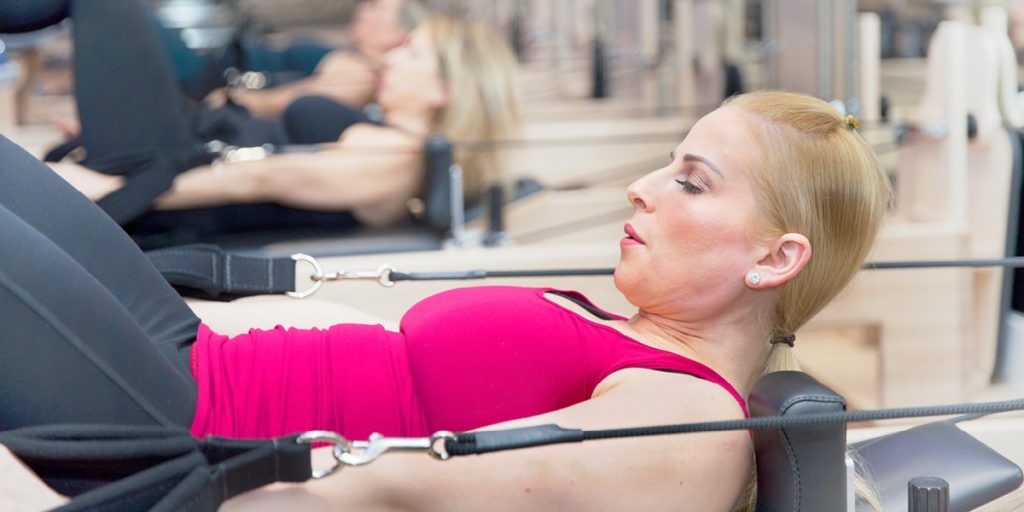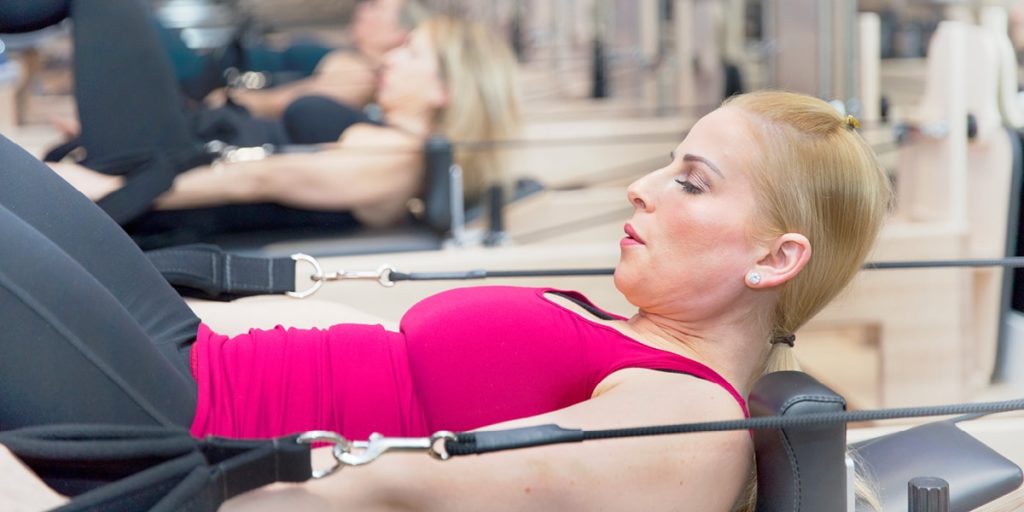Written by Kit Matthews, PMA®-CPT, Master Trainer for Club Pilates, Owner of KitPilates LLC
I recently learned a friend had suffered a TBI, a Traumatic Brain Injury. The repercussions from my friend’s TBI are similar to the after effects of a stroke. I wondered how I could help, and it dawned on me that Pilates could be the answer.
After a neurological event, many patients suffer the lingering effects of restricted mobility, loss of coordination, balance and spatial orientation. The Pilates mind-body connection is specifically geared to healing and strengthening the physical functions most affected by stroke and TBI.
With the caveat that every illness is highly individual and requires a physician’s approval prior to undertaking an exercise regimen, many stroke patients are recovering partial to full range of movement with the benefit of Pilates.
As a trainer, the application of Pilates to assist in proper balance is a key cornerstone in my teaching routine. I use it to illuminate inherent weaknesses and to strengthen these weaknesses simultaneously. One example is holding onto a stable surface with both hands (such as a counter or a fixed ballet barre), slowly lifting one foot off the floor, and progressing to hold onto the stable surface with just one hand and then neither hand. In more severe injuries of restricted mobility, a seated position is directed while training the client to gradually stand unassisted.
The major component of Pilates is strengthening the “Core” or the “Power House”. Ultimately, core strength allows us to stand and balance against gravity. When training the transversus abdominus, obliques, rectus abdominus, pelvic floor and multiple spinal muscles, our body is realigned to effectively and naturally remain upright and stable. Core strength is the necessary prerequisite to regaining full mobility.
Coordination is another key component to regaining functional movement. We often neglect the use of our non-dominant arms and legs. Pilates employs subtle movements that can be deceptively difficult especially when applied to our non-dominant limbs. Imagine the level of difficulty a stroke patient encounters! You are usually unable to fully lengthen an arm or lift it as high as you formally could. Targeted small movements that focus on challenged muscle groups assist greatly on the road to recovery. No single modality can do all things for all people, but Pilates can be a key component of recovery for many patients… including my dear friend who is healing beautifully!
As always, consult a physician before beginning any exercise regime.
| BOOK YOUR FREE CLASS |




